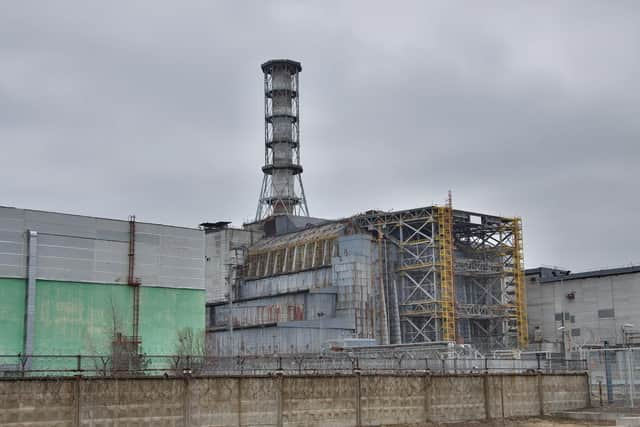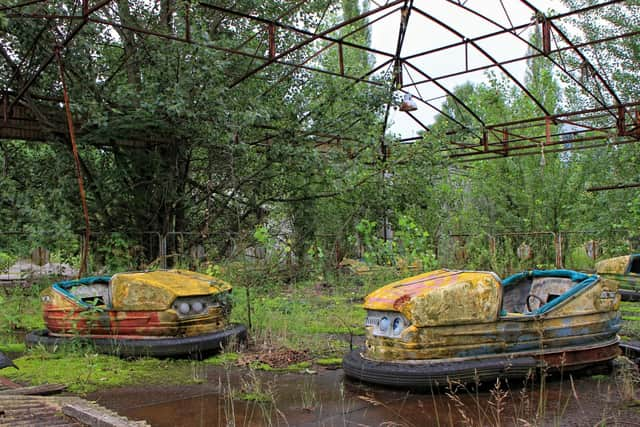Ukraine invasion by Russia: Where is the Chernobyl nuclear power plant, is it still operating, and what happened there?
Reports of Russian soldiers arriving at the plant after invading from Belarus in the north has led to concerns about nuclear waste storage facilities being caught up in the crossfire.
Here’s what you need to know about the Chernobyl Nuclear Power Plant.
Advertisement
Hide AdAdvertisement
Hide AdWhere is Chernobyl?
The Vladimir Lenin Nuclear Power Plant, more commonly known as the Chernobyl Nuclear Power Plant (ChNPP), is located near the abandoned city of Pripyat in northern Ukraine, 10 miles from the border with Belarus, 10 mile northwest of the city of partially-abandoned city of Chernobyl, and about 62 miles north of Ukraine’s capital, Kyiv.
When was Chernobyl built?
Construction of the plant and the city of Pripyat to house workers and their families began in 1970, when Ukraine was part of the Soviet Union.
The first reactor at Chernobyl was completed in 1977, followed by reactor Number 2 in 1978, Number 3 in 1981, and Number 4 in 1983.


What happened in 1986?
The Chernobyl disaster occurred when technicians at reactor Number 4 attempted to shut down the reactor's power-regulating system and its emergency safety systems to remove control rods from its core.
A combination of a flawed reactor design and human error by poorly trained operators led to an uncontrolled chain reaction that resulted in several massive explosions.
At least five per cent of the radioactive reactor core was released into the environment, spreading across Europe with wide-ranging health consequences.


How many people died?
There is some debate about exactly how many people lost their lives as an immediate result of the disaster, but the internationally recognised death toll shows that two workers died at the site of the explosion, another died in hospital soon after due to their injuries and 28 operators and firemen are thought to have died within three months of the accident.
Meanwhile, there is no agreement about how many died due to long-term health effects caused by the radiation that was released and spread around the world – with estimates ranging from 4,000-60,000 people.
Advertisement
Hide AdAdvertisement
Hide AdWhat’s the Exclusion Zone?
The Exclusion Zone is an area of approximately 1,000 square miles, officially called the ‘zone of alienation’ which was cleared of inhabitants after the accident due to the amount of harmful radiation present.
It’s thought that it will be a mimimum of several hundreds of years before the area is habitable again.
Is the plant still in use?
The three other reactors remained in use after the accident but were eventually shut down in 2000 and are currently still in the process of being fully decommissioned.
Reactor Number 4 was destroyed entirely, with the wreckage enclosed in a concrete and lead sarcophagus to prevent more radioactive material escaping.
The plant is administered by the State Agency of Ukraine on Exclusion Zone Management, who recently constructed a large steel confinement shelter to make Reactor Number 4 more secure.
A message from the Editor:
Thank you for reading this article. We're more reliant on your support than ever as the shift in consumer habits brought about by Coronavirus impacts our advertisers.
If you haven't already, please consider supporting our trusted, fact-checked journalism by taking out a digital subscription.
Comments
Want to join the conversation? Please or to comment on this article.
